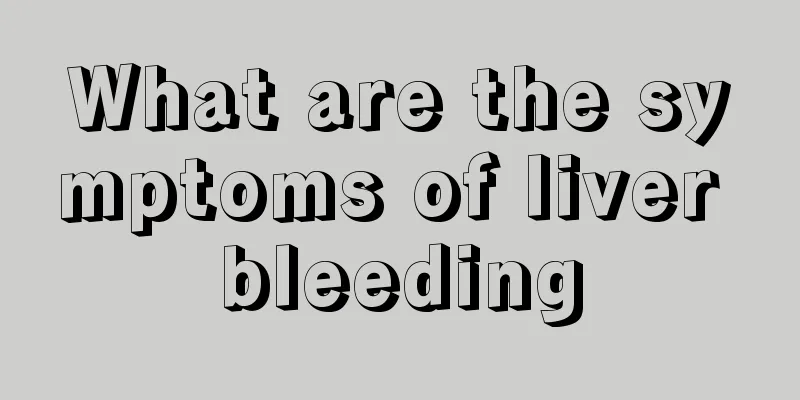What are the symptoms of liver bleeding

|
Most liver hemorrhage is caused by liver rupture. This phenomenon is not particularly common, but the harm it brings is extremely terrible. Generally speaking, the incidence of this disease in patients with liver disease is 15%-20%. There are many factors that can lead to liver rupture, whether pathological or traumatic. Once liver bleeding occurs, it may threaten our lives and property. What are the symptoms of liver bleeding? Have you ever experienced bleeding gums or nose when you brush your teeth or wash your face in the morning? Bleeding gums and noses are a common thing and are also common for hepatitis patients. Some hepatitis patients also find some blood on their food when they eat. Many patients with chronic hepatitis are prone to the bleeding phenomena mentioned above, and the bleeding phenomena in patients with severe hepatitis are even more serious. Not only will their gums and noses bleed, some patients will also have bruises on their skin, some female patients will experience excessive menstruation, and some patients will even have tarry stools or vomit blood. These bleeding phenomena are actually caused by damage to liver cells, which leads to varying degrees of reduction in the content and activity of coagulation factors, resulting in coagulation mechanism disorders. Some hepatitis patients bleed because of increased fragility of their capillaries. Some patients with severe hepatitis may also experience severe bleeding, such as disseminated intravascular coagulation. Such a situation must be taken seriously! Patients with general hepatitis bleeding do not need to be overly nervous. They can just take some vitamins and other hemostatic drugs. However, for patients with severe hepatitis, when bleeding is more severe, it may cause the condition to worsen. It must be taken seriously and treated in time! Causes of liver bleeding: Causes 1. Vascular damage: In cirrhosis, the vascular endothelium is damaged, capillary permeability increases, and bleeding is prone to occur. In cirrhosis of the liver, due to increased portal vein pressure, varicose veins in the esophagus and gastric fundus are easily damaged and ruptured and bleeding. 2. Increased fibrinolysis: The final stage of the coagulation process is the formation of fibrin, which can be dissolved by plasmin. In cirrhosis, the liver cannot effectively clear the activators of fibrinolytic enzymes, which increases the dissolution of fibrin and easily leads to liver bleeding. Warm reminder: it is recommended to have a clear examination to see if there are any vascular malformations in the liver, or cirrhosis, various types of hepatitis, etc. Malnutrition and vitamin K deficiency can sometimes cause ischemia. |
<<: How long can you live with ascites and vomiting blood
>>: Can alcoholic liver disease be cured?
Recommend
Preoperative health guidance for gastric cancer patients
Preoperative health guidance for gastric cancer p...
Symptoms and treatment of heat stroke
In summer, many people will experience symptoms o...
What are the functions and effects of Wubeizi?
Wubeizi can mainly play the role of clearing away...
The difference between lunge squat and lunge squat
Nowadays, people are busy with work every day, so...
Is there a big difference between periodontal treatment and teeth cleaning?
Dental health is very important, which requires p...
What are the effects of Huang's Shengmai Drink
Huangqi Shengmai Drink is mainly composed of the ...
What are the examination items for rectal cancer
Due to the influence of various unhealthy eating ...
What is the most effective way to treat advanced lung cancer? Comprehensive treatment methods for advanced lung cancer
As living standards continue to improve, the qual...
What to do when the indoor air is dry in winter
As the weather turns colder, the air will become ...
What are the advantages and disadvantages of wearing braces
Many children are prone to tooth deformities afte...
What blood type can be transfused with type O blood?
As we all know, there are several types of human ...
What is the use of potato slices for facial application
Potatoes are a common food in our lives. Many peo...
What is iris detection?
As we all know, the structure of the human eye is...
What are the benefits of hot feet every day
The acupoints on the feet can be said to be the m...
Is the recurrence rate high after early cervical cancer surgery?
Nowadays, the level of treatment for cervical can...









